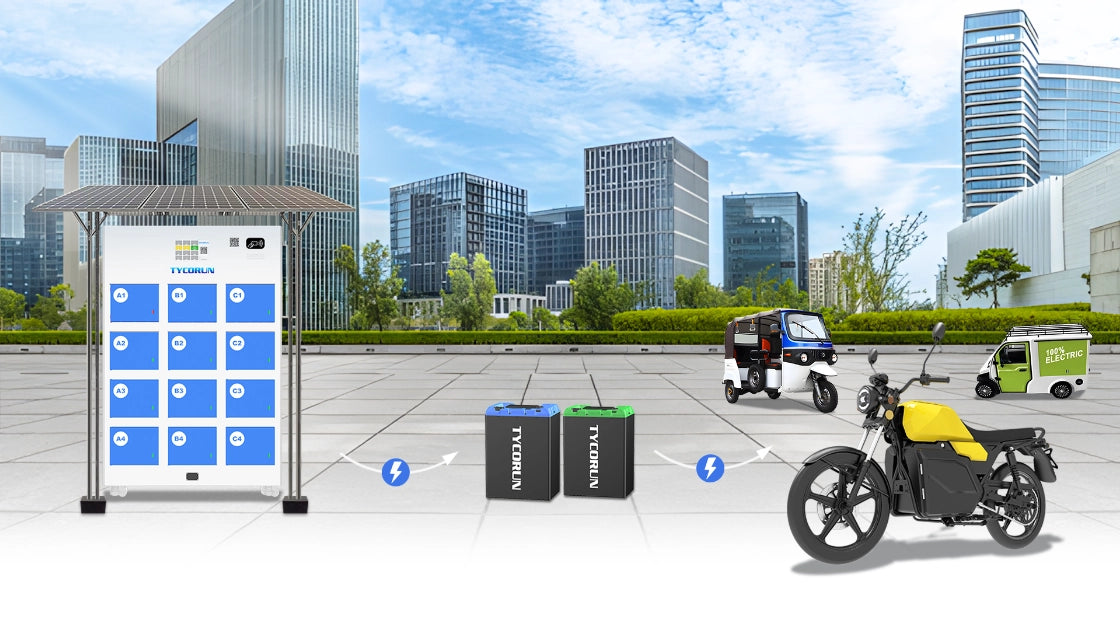
Main content:
- Common Cylindrical Battery Sizes and Their Applications
- How Are Cylindrical Battery Sizes Classified and Named?
- How Do Cylindrical Battery Sizes Impact Overall Performance?
- How Do Space, Performance, and Manufacturing Factors Influence Battery Choice?
- Factors To Consider When Selecting Cylindrical Battery Size
- What Makes Cylindrical Batteries Different from Other Battery Types?
- Advantages and Disadvantages of Different Cylindrical Battery Sizes
- Conclusion
- FAQ
As the energy industry continues to evolve, batteries have become the core component of everything from smartphones to electric vehicles (EVs). Among the many battery designs available today, cylindrical battery sizes stand out for their reliability, safety, and consistency. These batteries are widely used in electric vehicles, power tools, and energy storage systems due to their efficient manufacturing process and stable performance.
Although they may look similar from the outside, not all cylindrical batteries are the same. Each size comes with unique capacity levels, performance characteristics, and cost implications. In this in-depth guide, we’ll explore cylindrical battery sizes, how they compare with other battery types, and how different dimensions influence performance, cost, and applications.
Common Cylindrical Battery Sizes and Their Applications
Cylindrical batteries come in many sizes, and their numbers indicate physical dimensions. The first two digits show the diameter (mm), the next two indicate height (mm), and the fifth digit represents the cylindrical shape. For example, an 18650 battery is 18 mm wide and 65 mm tall, with “0” meaning it’s cylindrical. This follows the IEC standard, though some manufacturers use custom names.

- 10440
A compact 10×44 mm lithium-ion cell, usually a few hundred mAh, ideal for micro flashlights, mini speakers, and other small electronics.
- 14500
Similar in size to an AA battery (14×50 mm) with under 1000 mAh capacity. Common in flashlights, wireless speakers, keyboards, toys, and cameras.
- 16500
With 16×50 mm dimensions and slightly higher capacity than 14500, this type is used in flashlights, headlamps, and lighting devices.
- 18650
The most popular cylindrical battery (18×65 mm), offering 1500–3500 mAh. Balances size and performance, used in laptops, power tools, e-bikes, and e-scooters.
A 21×70 mm cell with 3000–5000 mAh capacity. It offers higher energy density than 18650 and is used in EVs, e-bikes, and solar lighting systems.
- 26650
Larger at 26×65 mm, providing higher capacity for demanding applications like EVs, solar energy storage, power banks, and high-power flashlights.
How Are Cylindrical Battery Sizes Classified and Named?

Cylindrical batteries follow a universal naming system that indicates their physical dimensions using five digits. The first two digits represent the diameter in millimeters, while the last three digits indicate the height in tenths of a millimeter. For instance, an 18650 cell measures 18 mm in diameter and 65.0 mm in height, a 21700 cell is 21 mm by 70.0 mm, a 26650 is 26 mm by 65.0 mm, and the large 4680 cell is 46 mm by 80.0 mm. These measurements directly affect the battery’s internal structure, energy storage capacity, and heat dissipation.
The progression from 18650 to 21700 and now 4680 reflects the industry’s shift toward larger cylindrical battery sizes that can store more energy and deliver higher output for modern electric vehicles and energy storage systems.
How Do Cylindrical Battery Sizes Impact Overall Performance?
The dimensions of a battery cell are more than just numbers — they define its electrical behavior and efficiency. Different cylindrical battery sizes affect capacity, energy, power delivery, and thermal control in several key ways.
1. Capacity and Energy
Larger cells naturally hold more active materials (such as cathodes, anodes, and electrolytes), which means greater capacity. For example, a 21700 cell offers around 30%–50% more capacity compared to the older 18650 model.
Because energy equals capacity multiplied by voltage, the increase in cell volume also means higher total energy. Larger cylindrical battery sizes can integrate advanced materials like high-nickel cathodes or silicon-carbon anodes, further boosting energy density without compromising stability.
2. Power Output
Power capability is influenced by how efficiently a cell can discharge and recharge. A wider diameter provides a larger electrode surface area, allowing for better current distribution and lower internal resistance. This improves performance during high-power applications, such as rapid acceleration in EVs or heavy tool use.
Tesla’s 4680 cell, for instance, adopts a “tabless” design that shortens current paths and reduces internal resistance — enhancing both efficiency and heat control.
3. Thermal Management
As cells grow larger, they produce more heat during operation. However, they also have more surface area for cooling. When paired with optimized thermal systems (such as cooling plates or airflow designs), large cylindrical battery sizes maintain stable temperatures even under heavy loads.
4. Safety and Reliability
Larger cells must handle higher energy and power, so advanced safety mechanisms become essential. Modern cylindrical batteries often include features like pressure relief valves, current interrupt devices (CID), and positive temperature coefficient (PTC) protection. Combined with strong steel casing, these safety layers make cylindrical designs more robust than pouch formats.
How Do Space, Performance, and Manufacturing Factors Influence Battery Choice?
Choosing the right cylindrical battery size depends on a mix of physical and economic factors.

- Space Constraints
Devices with limited internal room, such as handheld electronics, must use smaller batteries to maintain compact design. Larger formats are reserved for applications with flexible space, like EV battery packs or solar storage units.
- Performance Demands
Applications that prioritize high power or long runtime need batteries with larger volume and surface area. High-performance cylindrical battery sizes can support fast charging, high discharge rates, and stable voltage output, making them ideal for vehicles and heavy-duty equipment.
- Manufacturing Efficiency and Cost
Each battery size requires specialized production tools for processes such as electrode winding and electrolyte injection. Established formats like 18650 benefit from mature manufacturing lines, reducing cost per unit. In contrast, newer sizes like the 4680 demand updated machinery and higher initial investment — but yield better performance and long-term savings.
Factors To Consider When Selecting Cylindrical Battery Size
When selecting a cylindrical lithium-ion battery, consider the following:
- Application: Match the battery to your device’s power, voltage, and space needs. High-power devices like EVs need larger batteries, while small gadgets work with compact cells.
- Size & Weight: Choose a battery that fits your device physically—small cells (14500) for compact devices, larger cells (26650) for spacious equipment.
- Energy Density: Higher energy density (18650, 26650) stores more power but may cost more.
- Cost: Balance performance with budget; larger batteries are usually pricier.
- Availability & Compatibility: Ensure the battery is easy to source and fits your device.
Considering these factors helps you pick the cylindrical battery size that meets your needs efficiently.
What Makes Cylindrical Batteries Different from Other Battery Types?
To understand why cylindrical battery sizes are so popular, it’s helpful to compare them with other formats — prismatic and pouch batteries. These three represent the most common cell packaging structures in modern lithium battery production.

- Cylindrical batteries
Are known for their excellent production efficiency and uniform quality. Because of their consistent design, they are easier to manufacture in large quantities while maintaining stable performance.
- Prismatic batteries
Offer the highest packing efficiency at the module level, meaning more energy can be stored in a smaller space. However, they often struggle with consistency and safety during mass production.
On the other hand, feature high energy density and lightweight construction. Yet, they are more complex to produce and can be more expensive due to strict sealing and handling requirements.
Manufacturers such as Tesla, Panasonic, and Samsung SDI have embraced cylindrical formats because they balance safety, performance, and cost. This explains why cylindrical designs continue to dominate in industries that demand both reliability and scalability.
Advantages and Disadvantages of Different Cylindrical Battery Sizes
18650 Battery:
The 18650 battery is known for its high energy density, making it suitable for high-power applications. It is widely available from many manufacturers, offers a long cycle life for extended use, and is compatible with a variety of devices and applications. Additionally, 18650 cells come with established safety standards and protection circuits. However, they are larger and heavier than smaller batteries and tend to cost more.
Read 14500 battery vs 18650 for more comparison
14500 Battery:
The 14500 battery is compact, making it ideal for space-constrained devices. It can also serve as a direct replacement for standard AA batteries and fits into regular AA battery holders. This type of battery is generally more affordable than larger cells. On the downside, 14500 batteries have lower capacity and fewer options from manufacturers compared to 18650 cells.
26650 Battery:
The 26650 battery offers a larger capacity, providing longer runtimes and supporting high-power applications. It can handle higher discharge currents and has a higher energy density than 18650 cells. However, its larger size and weight can limit compatibility with some devices, and it is less widely available than the 18650 battery.
Conclusion
Understanding cylindrical battery sizes is crucial for anyone involved in the battery industry, whether in design, manufacturing, or application development. The size of a cylindrical battery directly affects its energy capacity, power output, safety features, and cost efficiency.
From the long-standing 18650 to the advanced 4680, every generation of cylindrical cells has pushed the limits of energy technology. As innovations in materials and structure continue, these batteries will remain at the forefront of the global shift toward sustainable energy and electrified transportation.
FAQ
1. Are larger cylindrical batteries always better?
Not necessarily. While larger cylindrical battery sizes offer higher capacity, they also generate more heat and require advanced cooling systems. The best choice depends on application requirements, space constraints, and safety considerations.
2. What industries benefit most from cylindrical batteries?
Cylindrical batteries are widely used in electric vehicles, power tools, home energy storage systems, and portable electronics because of their stable performance, scalability, and ease of production.
3. Are 18650 and 21700 the same size?
The 21700 battery cell has a dimension of 21mm diameter and 70mm in length. The cells are slightly larger than the 18650 and have a higher capacity.
Related Articles: Types of battery, 18650 battery store, Cylindrical vs Square vs Pouch















